Do you ever feel like you spend more time managing messes than enjoying your home? Piles of mail on the counter, clothes draped over chairs, or forgotten items accumulating by the door often make daily life feel more chaotic. These common challenges drain your energy and create stress. Many homeowners and renters find themselves trapped in a cycle of tidying up, only for clutter to reappear quickly. You want a home that supports relaxation and productivity, not constant cleanup. The good news is that achieving lasting order does not require endless hours of decluttering or expensive organizational systems. It begins with a simple, powerful principle: The One-Touch Rule.
The One-Touch Rule offers a revolutionary approach to home organization. It transforms your habits, helping you eliminate clutter before it even forms. This practical strategy teaches you to handle an item once, making an immediate decision about its home and placing it there. This method stops items from settling into temporary holding spots that inevitably become clutter hotbeds. By consistently applying this rule, you cultivate efficient declutter habits, significantly reduce visual noise, and reclaim your time. You establish a foundation for a calmer, more functional living space, making your home a sanctuary rather than a source of stress.
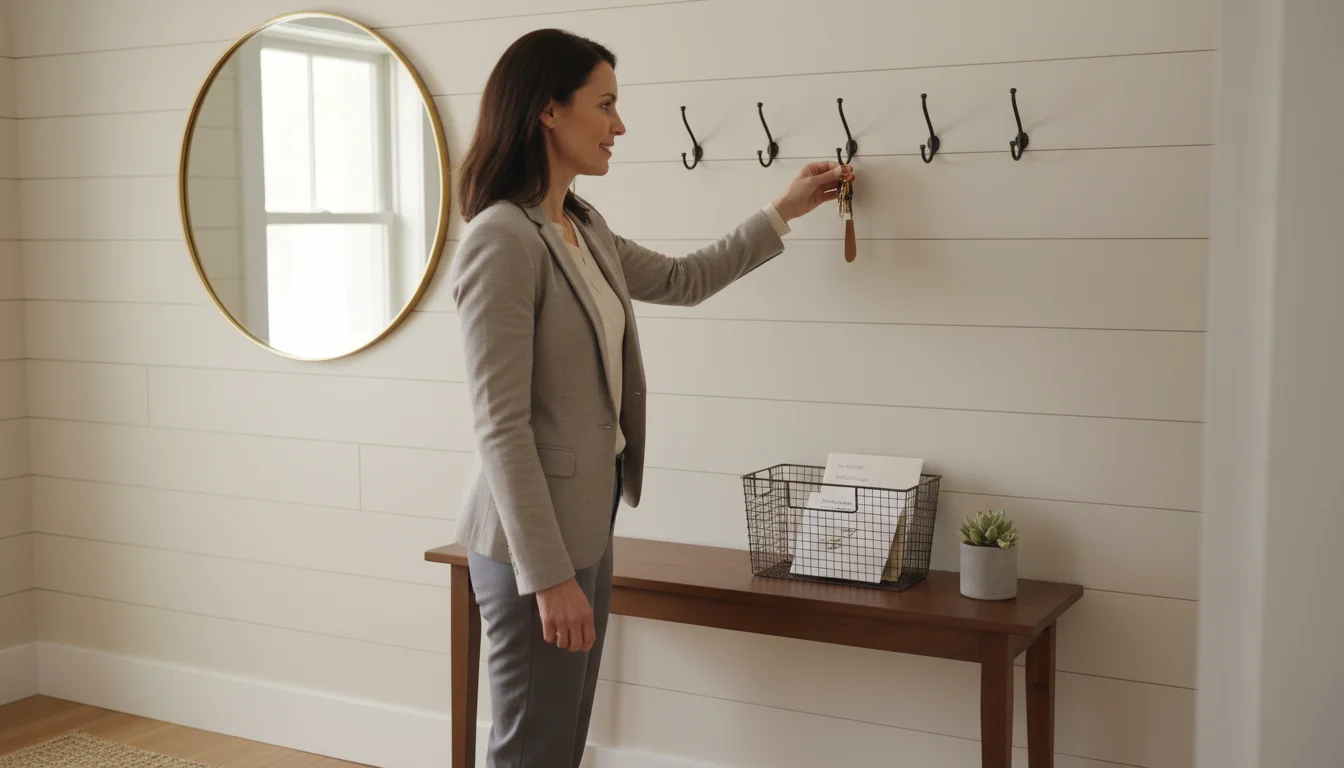
What is the One-Touch Rule?
The One-Touch Rule is a fundamental principle of effective home organization tips. It states that when you pick up or encounter an item, you should handle it only once. This means you immediately take action to put it in its designated home, discard it, or process it. The core idea prevents items from lingering in transition spots, creating clutter piles. Instead of setting down your keys on the kitchen counter, then moving them to a table, and eventually putting them on a hook, the One-Touch Rule encourages you to hang them on the hook as soon as you walk in the door.
Think about the typical cycle of a loose item. You enter your home, place your mail on the table. Later, you move the mail to the counter to make room for groceries. The mail then shifts to a stack of papers on your desk. Eventually, it becomes a forgotten stack, buried under new arrivals. This multi-touch process wastes time and energy. The One-Touch Rule simplifies this. It asks you to make a decision and act on it the first time you interact with an item. You open the mail over the recycling bin, immediately shredding junk mail and filing bills. This simple shift in behavior drastically reduces the opportunity for clutter to take root.
The One-Touch Rule applies to nearly everything in your home. From clothing to paperwork, groceries to gadgets, every item needs a home. When you bring something new into your space or finish using an existing item, you assign it a specific place. This rule promotes intentionality and minimizes the mental load associated with constant tidying. It’s a foundational habit for anyone aiming to prevent clutter and maintain a consistently organized home.

Why the One-Touch Rule Works for Busy Lives
Busy homeowners, renters, and apartment dwellers often feel overwhelmed by the sheer volume of tasks required to keep a home tidy. The One-Touch Rule offers a powerful solution because it leverages efficiency and builds effective declutter habits without demanding large blocks of time. You do not need dedicated “organizing days” when you integrate this principle into your daily routine. Here is why it works:
- Saves Time and Energy: Every time you touch an item without resolving its fate, you spend mental and physical energy. Research shows that making multiple decisions about the same item contributes to decision fatigue. The One-Touch Rule eliminates these redundant actions. You save minutes throughout your day that accumulate into hours over a week. This means more time for activities you enjoy, rather than perpetual cleanup.
- Reduces Mental Clutter and Stress: Physical clutter often translates into mental clutter. Piles of unaddressed items serve as constant visual reminders of undone tasks, leading to stress and anxiety. By immediately putting things away, you clear your physical space and your mind. You gain a sense of control and calm, knowing your environment supports your well-being.
- Prevents Accumulation: The most effective way to prevent clutter is to stop it from gathering in the first place. The One-Touch Rule acts as a proactive defense mechanism. It creates an immediate barrier against new piles forming. Since every item gets a home right away, nothing sits out long enough to attract more items, effectively halting the clutter snowball effect.
- Builds Stronger Habits: Consistency is key to any successful organization system. Practicing the One-Touch Rule reinforces positive declutter habits every single day. Each time you put something away immediately, you strengthen neural pathways that make this action automatic. Over time, organizing becomes less of a chore and more of a natural, effortless part of your routine. This makes home organization tips incredibly sustainable.
- Empowers You to Be Decisive: Often, clutter arises from delayed decisions. You postpone deciding where to put something or whether to keep it. The One-Touch Rule forces immediate decision-making. This practice sharpens your ability to assess an item’s value and purpose quickly, which is a valuable skill extending beyond just organization.
Consider the cumulative impact. If you spend five minutes every evening tidying items that accumulated throughout the day, that is 35 minutes a week. If you apply the One-Touch Rule consistently, many of those five-minute cleanups become unnecessary, freeing up valuable time and preventing clutter from ever becoming a noticeable problem. This strategy provides realistic living solutions for maintaining order, even with a demanding schedule.
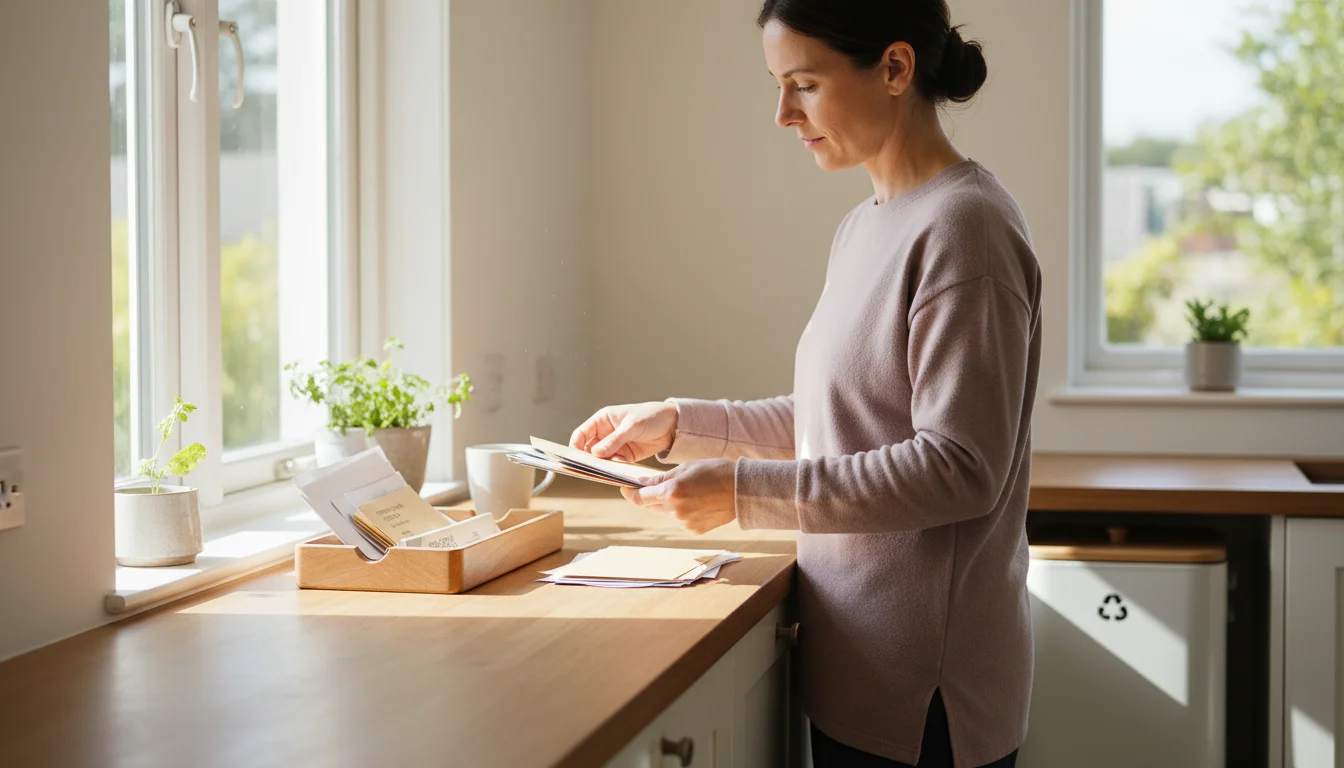
Implementing the One-Touch Rule: A Step-by-Step Guide
Ready to integrate the One-Touch Rule into your daily life? This step-by-step guide helps you implement this powerful strategy effectively, turning good intentions into lasting declutter habits.
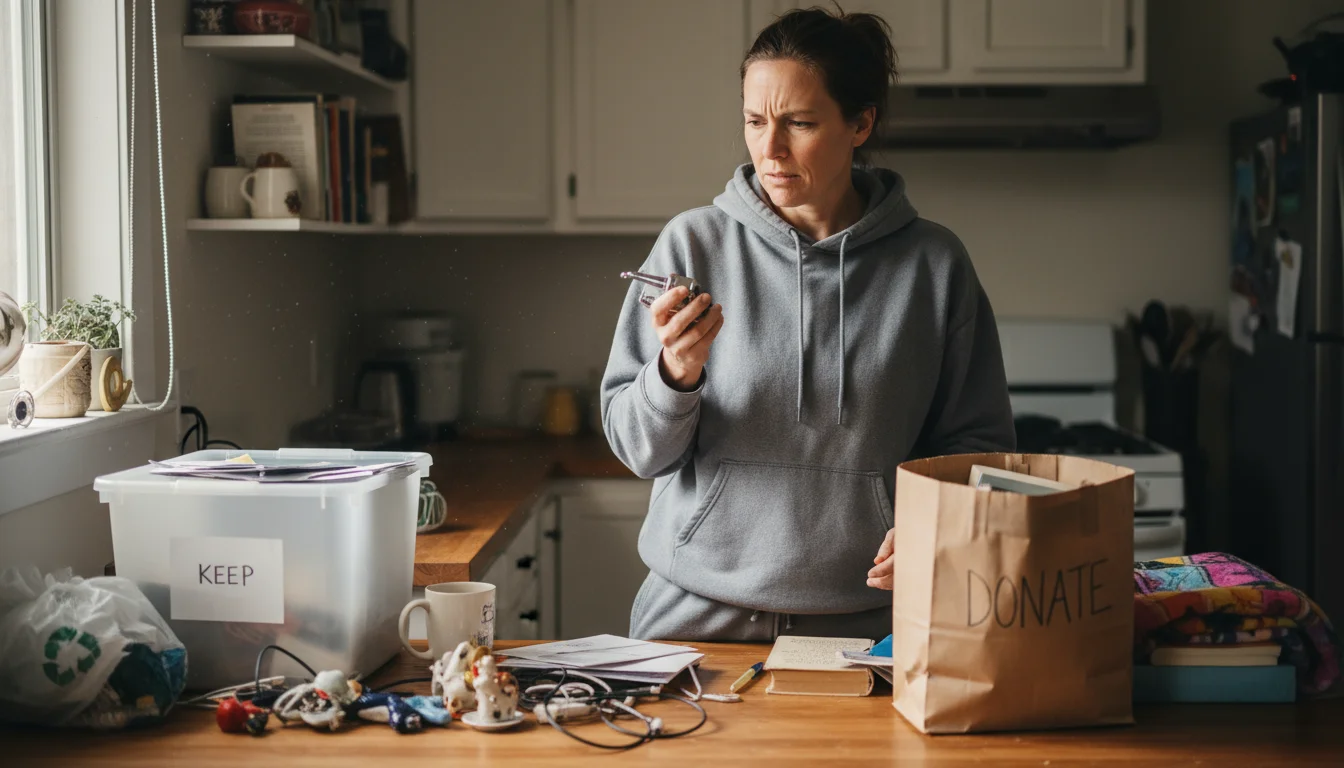
Step 1: Declutter Your Space First
You cannot put items away with one touch if they do not have a home. Before you start, perform an initial decluttering pass on your most challenging areas. Identify items you no longer need, use, or love, and remove them. This process creates the necessary “homes” for the items you keep. Focus on one area at a time, such as your entryway, kitchen counter, or a single drawer. You make space for the One-Touch Rule to thrive.
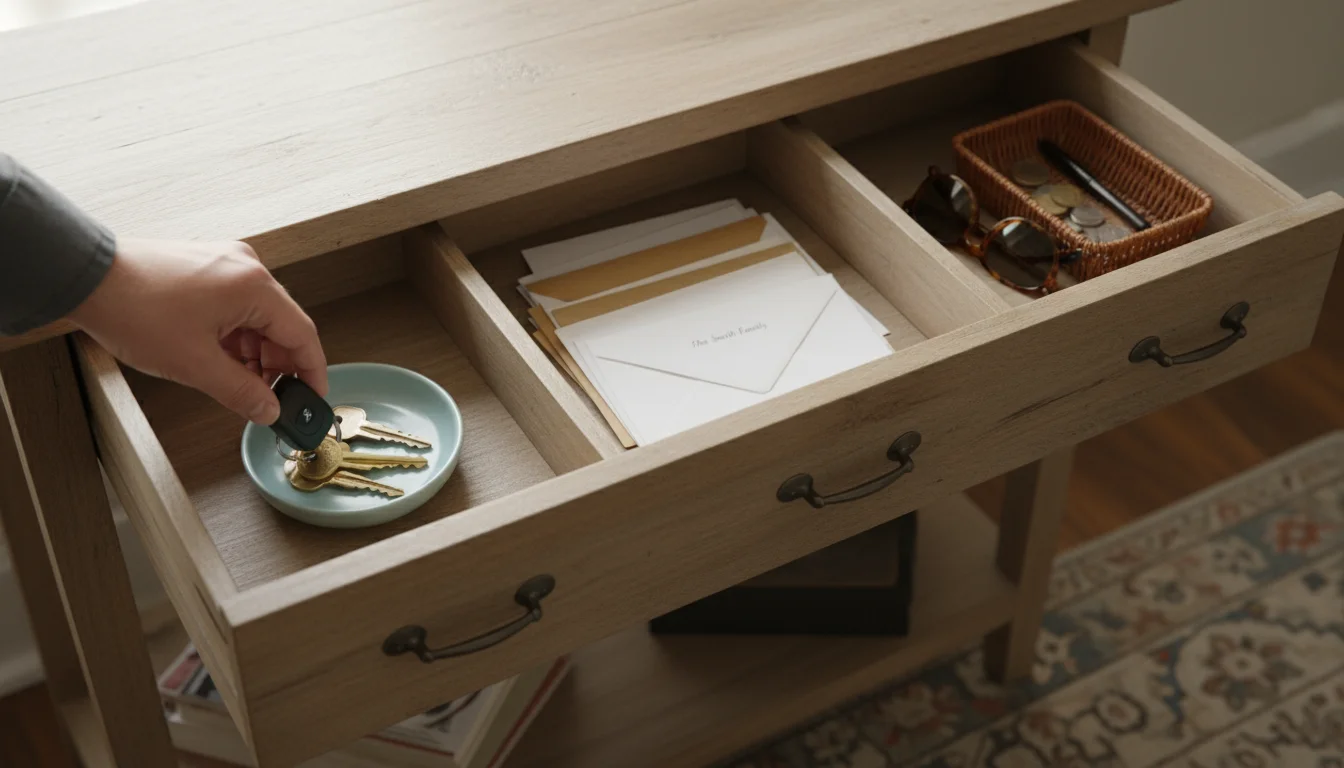
Step 2: Assign Every Item a “Home”
The success of the One-Touch Rule hinges on having a designated spot for every single item you own. “Zones” are designated areas for specific activities or types of items. For instance, your entryway might have a zone for keys, mail, and shoes. Your kitchen might have zones for cooking utensils, food storage, and cleaning supplies. Walk through your home and identify where items typically land. Then, designate a logical, accessible “home” for each type of item. If an item does not have a home, you must create one or consider if you truly need to keep it.
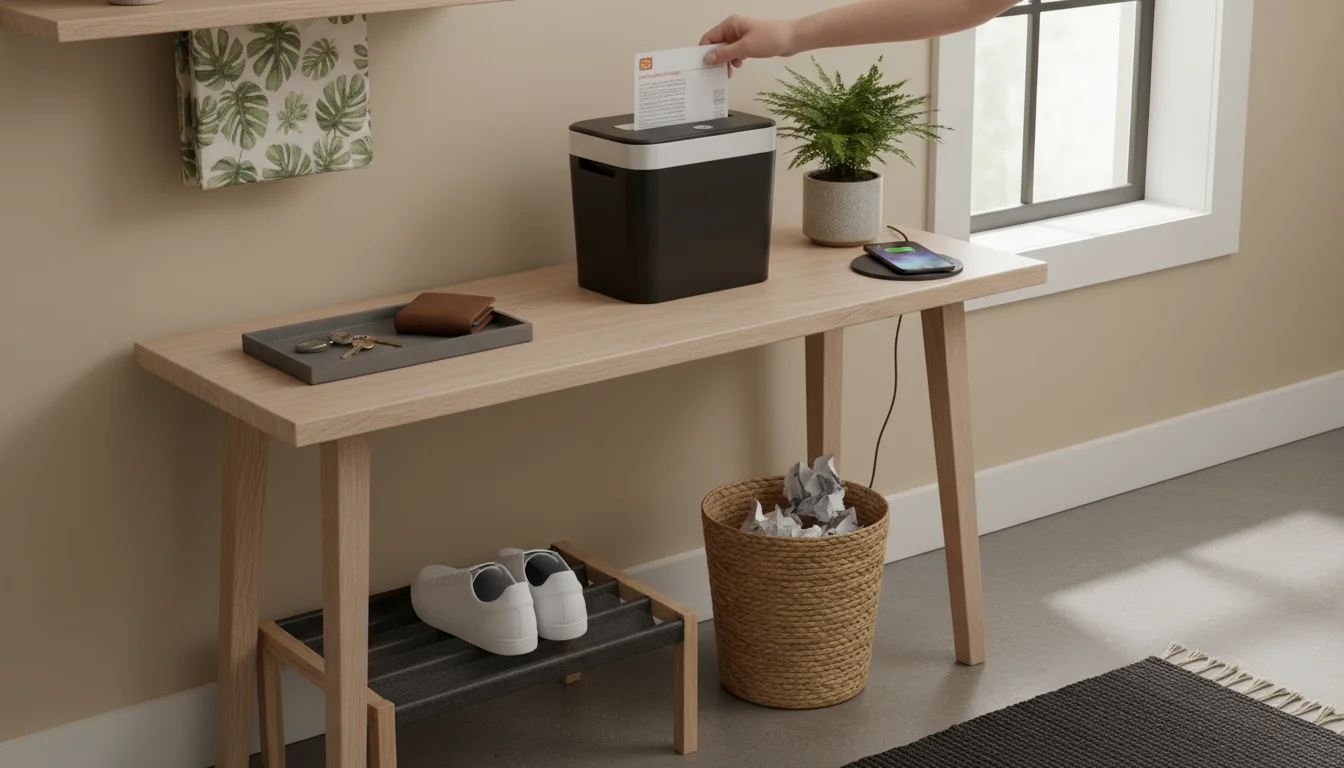
Step 3: Develop Clear Entry and Exit Systems
Clutter often enters and leaves our homes through specific pathways. Think about how items come into your home (mail, groceries, shopping bags) and how they leave (trash, recycling, donations). Create simple, immediate systems for these points. For instance:
- Mail: Place a shredder and recycling bin near your front door or where you open mail. Immediately process, shred junk mail, recycle envelopes, and file important documents.
- Groceries: Unpack groceries directly into the pantry, fridge, or designated cabinet as soon as you bring them in.
- Shopping Bags: Empty bags immediately. Return reusable bags to your car or designated hook. Discard or fold plastic bags.
- Keys/Wallet/Phone: Install a hook, tray, or charging station right inside your entry point. Place these items there every single time you walk in the door.
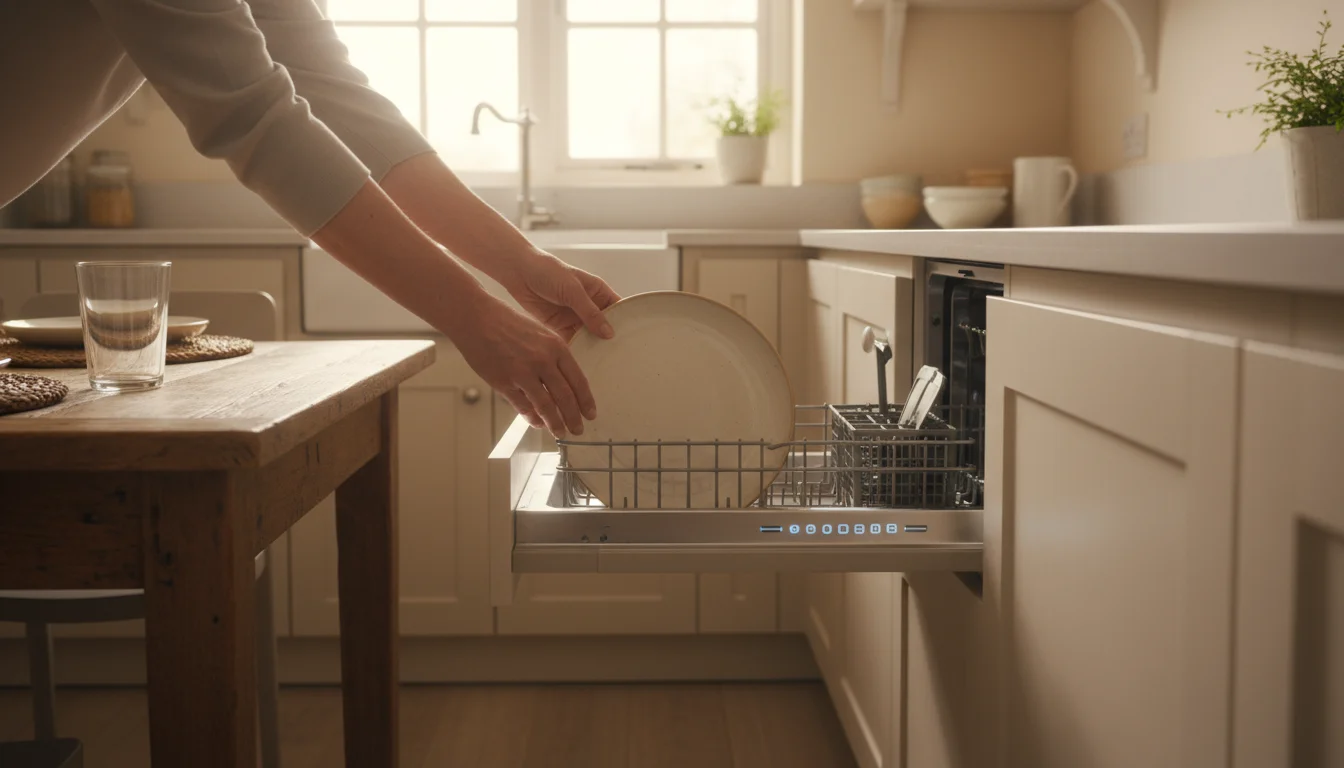
Step 4: Practice Immediate Action
This is the core of the One-Touch Rule. When you interact with an item, commit to taking action immediately. Do not set it down “just for a moment.” Instead, ask yourself: “Where does this live?” Then, put it there. This requires conscious effort at first. For example:
- When you take off your coat, hang it up immediately.
- When you finish a book, return it to the bookshelf.
- When you take a dish from the table, put it directly into the dishwasher or sink.
- When you remove a tool from the toolbox, put it back when you finish using it.
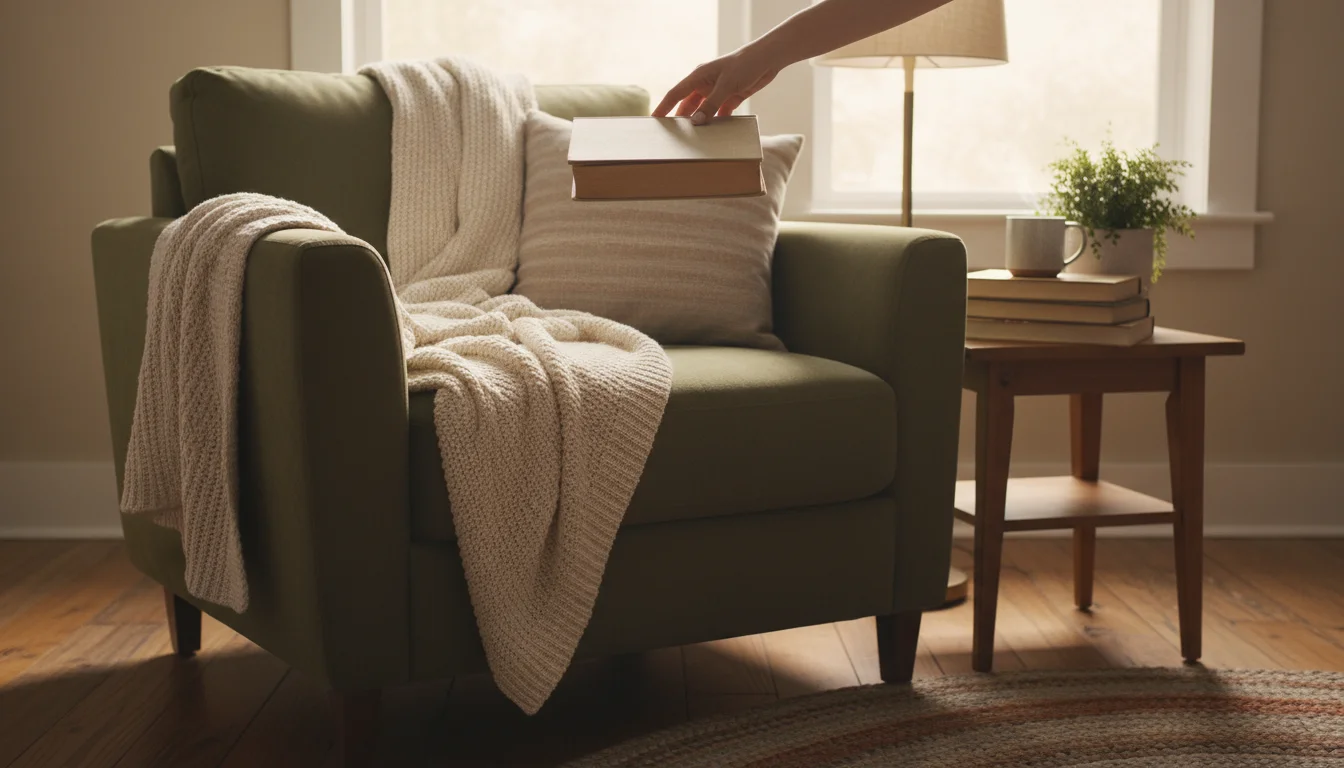
Step 5: Be Consistent and Patient
Like any new habit, the One-Touch Rule requires consistent practice. You will forget sometimes, and that is perfectly normal. Do not get discouraged. Simply pick up the item and put it away, recommitting to the rule. The more you practice, the more automatic it becomes. Celebrate small victories and acknowledge your progress. Over time, this conscious effort transforms into an ingrained habit, making home organization feel effortless.
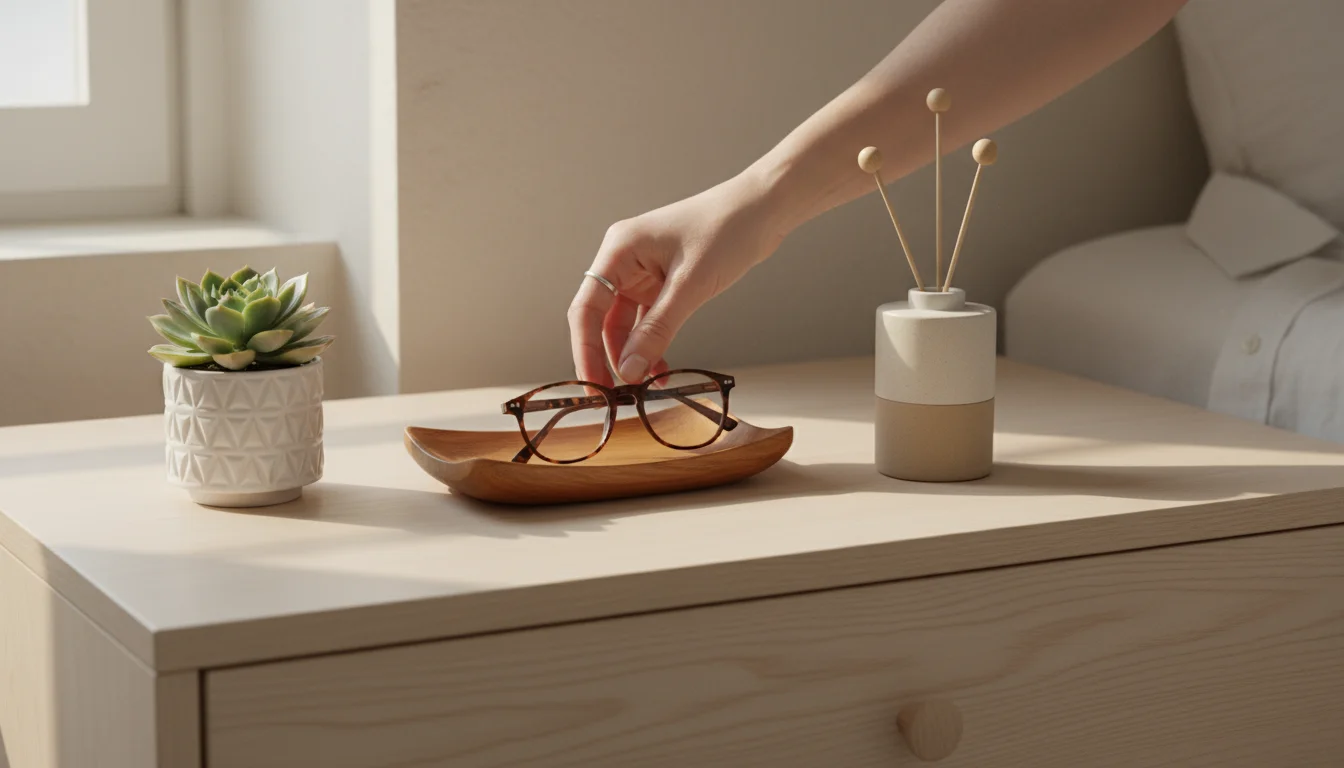
Applying One-Touch in Key Home Zones
The One-Touch Rule is most effective when applied consistently across various areas of your home. You transform high-traffic, clutter-prone zones into organized, functional spaces. Here are specific strategies for key areas:
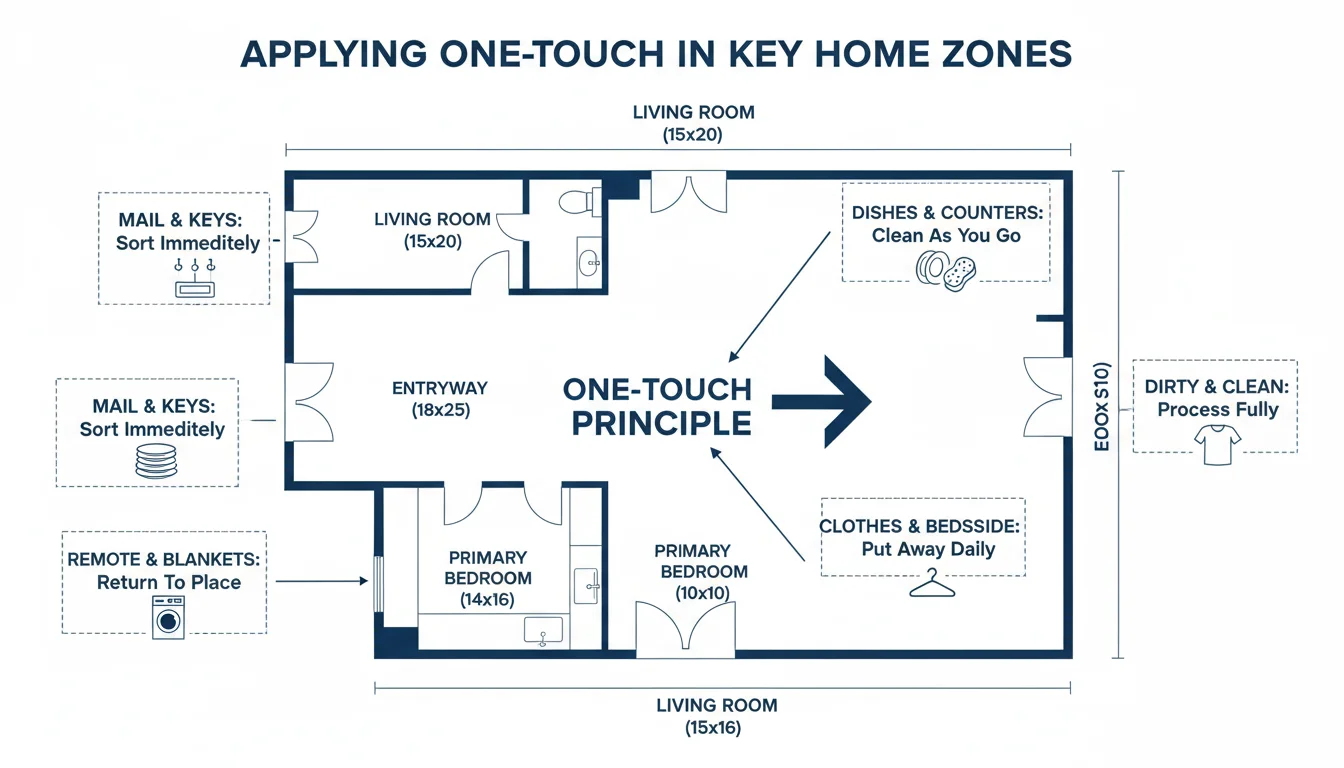
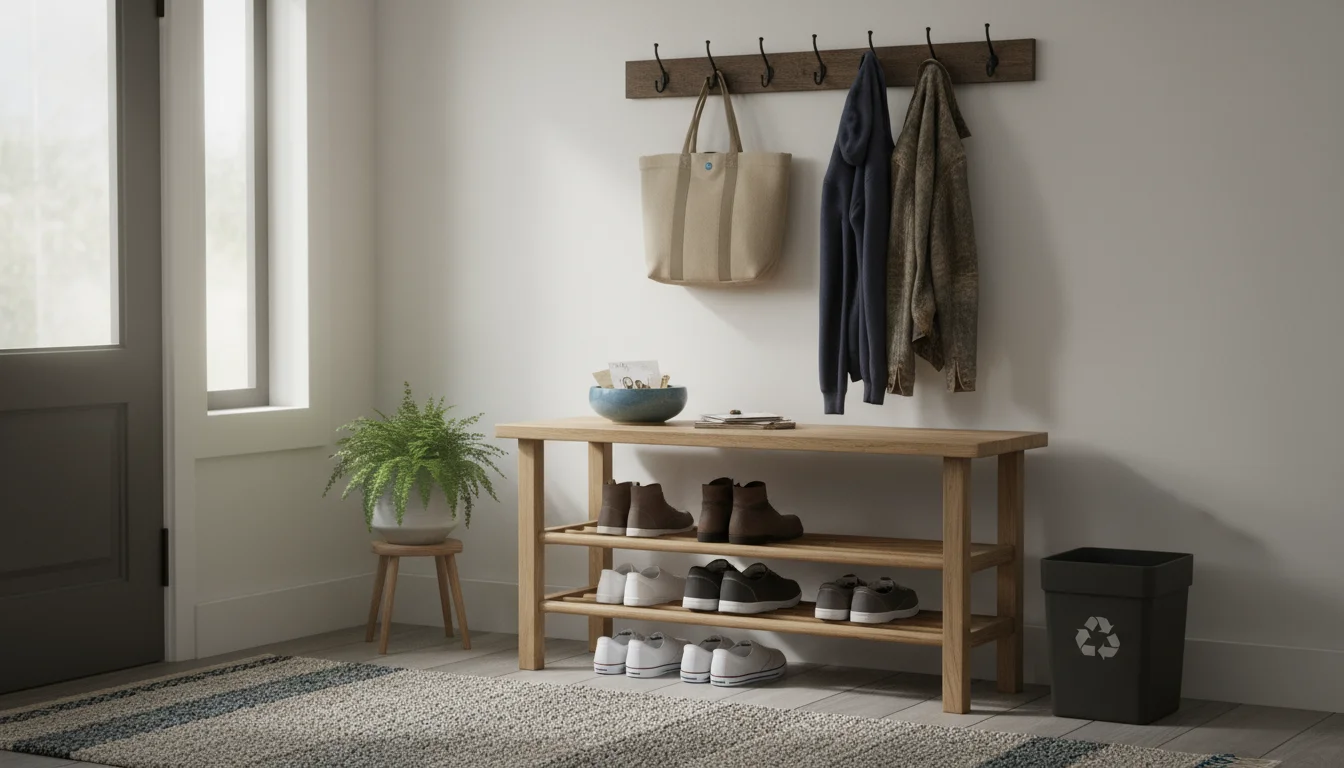
The Entryway
Your entryway or mudroom is often the first point of contact for external clutter. Keys, mail, bags, shoes, and coats can quickly accumulate. Implement One-Touch by:
- Installing hooks for coats and bags immediately upon entry.
- Placing a designated tray or bowl for keys and wallets right inside the door.
- Setting up a mail station with a shredder and recycling bin to process mail as soon as it enters your home.
- Using a shoe rack or bin for shoes, so they do not scatter across the floor.

The Kitchen
Kitchen counters are notorious clutter magnets. Food packaging, dishes, small appliances, and paperwork can quickly create chaos. Apply the One-Touch Rule by:
- Putting groceries away immediately after unpacking them.
- Wiping down counters and putting away ingredients while cooking.
- Placing dirty dishes directly into the dishwasher or sink after meals.
- Storing small appliances in cabinets or pantries when not in use.
- Processing any papers or receipts that enter the kitchen immediately, filing or discarding them.
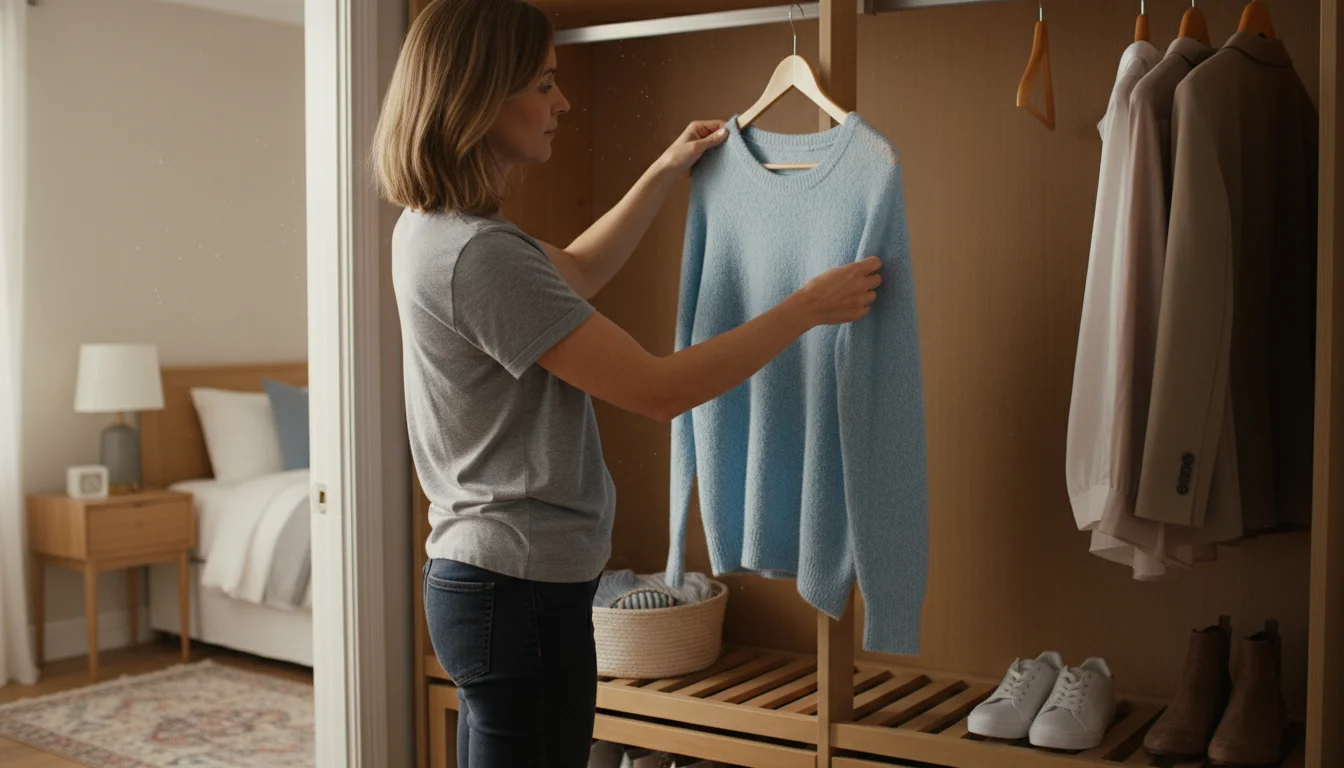
The Bedroom and Closet
Clothes, accessories, and personal items often contribute to bedroom clutter. The “floordrobe” or “chair-drobe” is a common problem. One-Touch strategies include:
- Hanging up clothes immediately after taking them off, or placing them in a laundry hamper if dirty.
- Returning shoes to their designated spot in the closet or shoe rack.
- Putting away jewelry or accessories in their specific organizers after use.
- Storing books on a nightstand or bookshelf once you finish reading them.

The Home Office or Desk Space
Paperwork, pens, and office supplies easily create a cluttered desk. Utilize the One-Touch Rule for your workspace:
- Processing incoming mail and papers immediately: file, shred, or take action.
- Returning pens, staplers, and other supplies to their drawers or organizers after each use.
- Clearing your desktop at the end of each workday, filing documents and putting away unused items.
- Designating specific “inboxes” for items requiring action to prevent piles.

Overcoming Common One-Touch Challenges
Adopting the One-Touch Rule is a transformative process, but you will likely encounter some common hurdles. Knowing these challenges in advance helps you prepare and develop strategies to overcome them.
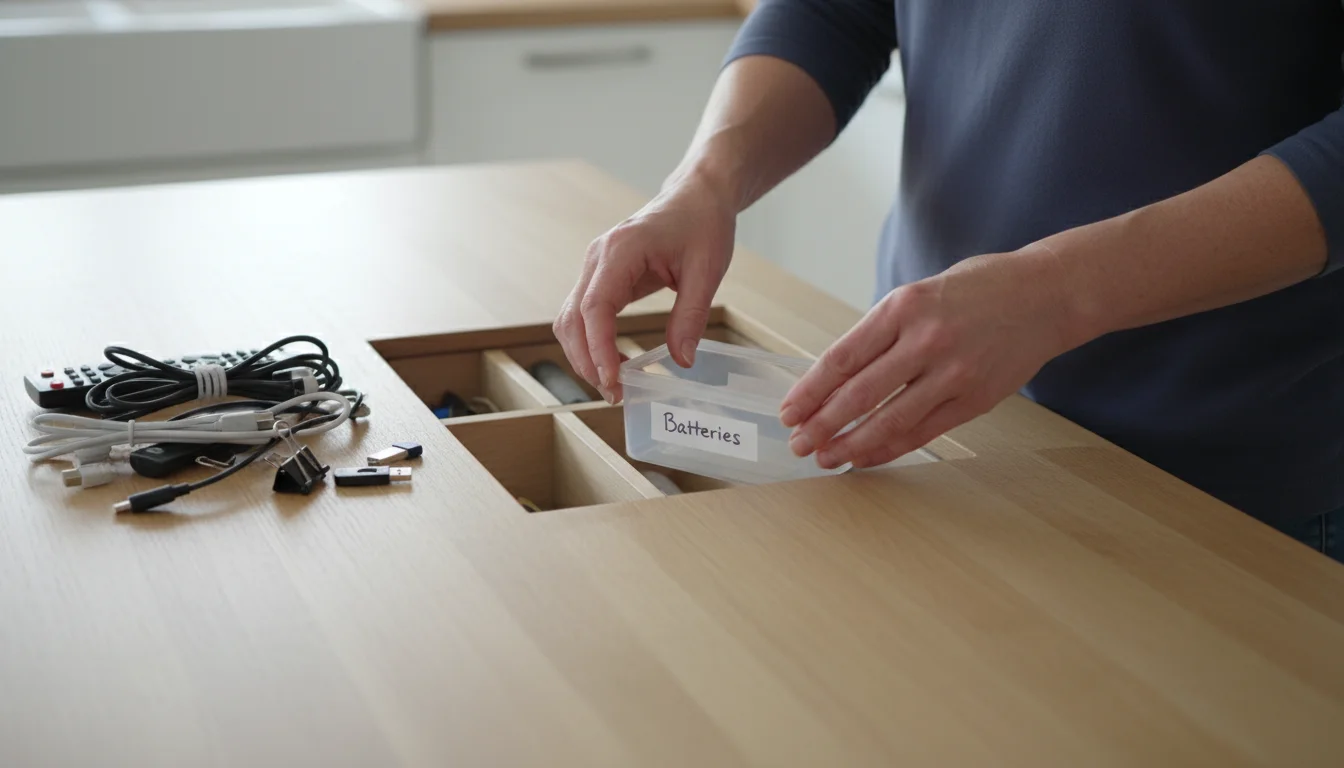
Challenge 1: Lack of Designated Homes
Problem: You cannot put something away in one touch if it does not have a clear home. This leads to items floating around, waiting for a decision. A 2017 survey by the National Association of Professional Organizers (NAPO) indicated that “too much stuff” and “lack of systems” are primary reasons people struggle with organization. If an item lacks a logical spot, you face a constant impediment.
Solution: Prioritize decluttering and creating homes for everything. Before implementing One-Touch, dedicate time to assigning a specific, accessible location for every item you own. Label shelves or bins if necessary. If you find an item without a home, either create one or strongly consider if you need to keep it. Remember, fewer items means fewer “homes” to manage.

Challenge 2: Decision Fatigue
Problem: At the end of a long day, your willpower to make another decision is low. The thought of immediately putting away every item feels overwhelming. You might find yourself setting things down out of sheer exhaustion.
Solution: Start small. Focus on one or two high-impact areas, like your entryway or kitchen counter. Practice the One-Touch Rule there until it becomes more automatic. Break down tasks into smaller, less daunting actions. For instance, rather than putting away all your groceries at once, focus on putting away one category (e.g., cold items) immediately. Also, simplify your choices. If you have fewer items, you have fewer decisions to make.
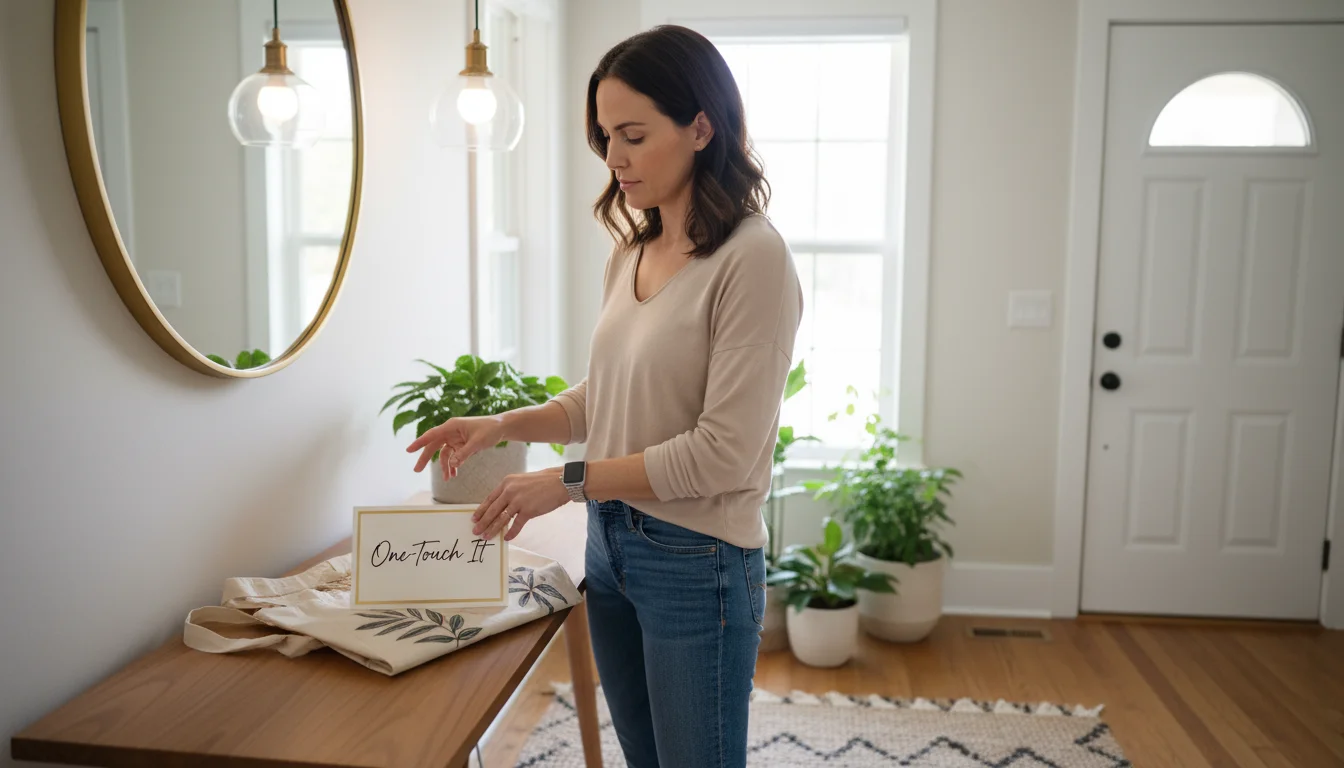
Challenge 3: Resistance to Change
Problem: Old habits die hard. You might be accustomed to leaving items out or moving them around multiple times. Shifting this ingrained behavior takes conscious effort and persistence.
Solution: Be patient and kind to yourself. Acknowledge that you are building new muscles. When you notice yourself setting an item down, gently correct the behavior. Pick it up and put it away immediately. Do not dwell on the lapse. Consistent, gentle redirection helps solidify the new habit. Consider setting visual reminders, like a small sign by your door, to “One-Touch It.”
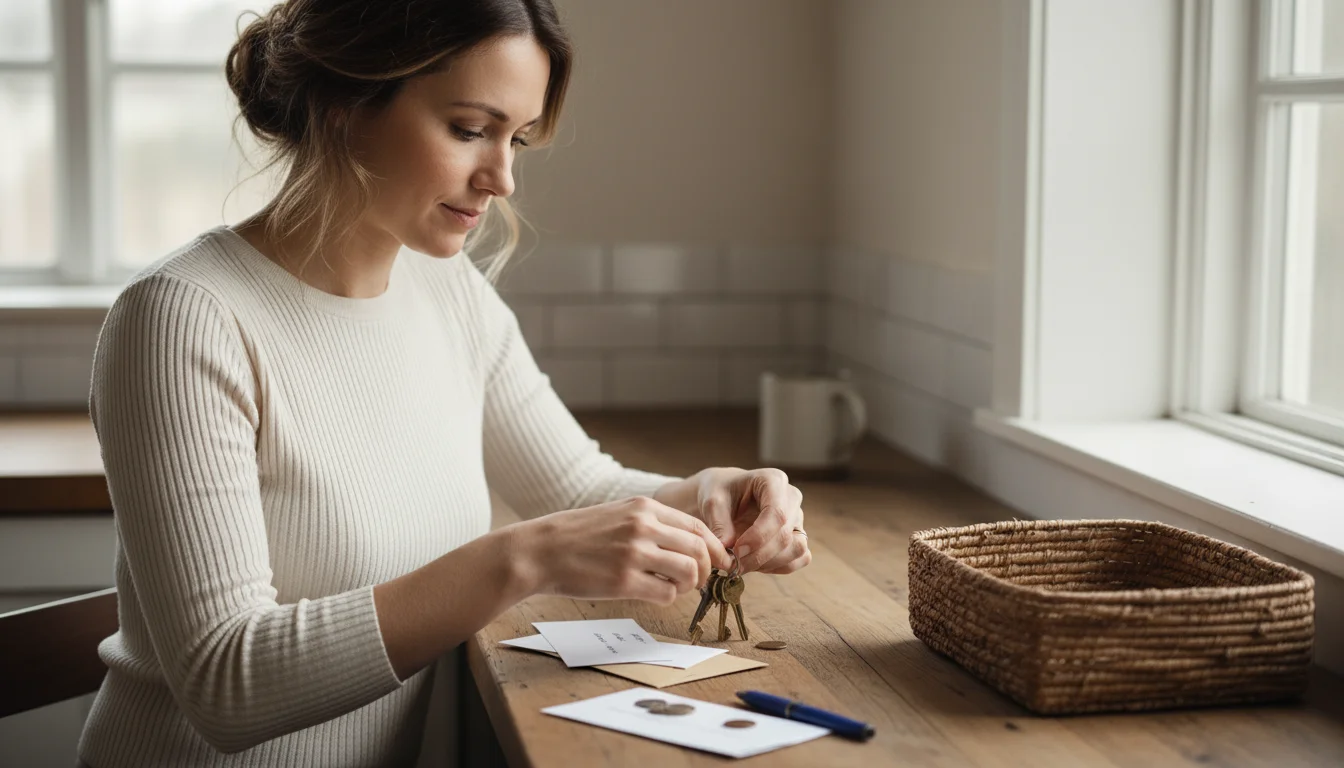
Challenge 4: Feeling Overwhelmed by Initial Clutter
Problem: If your home currently has significant clutter, the idea of applying One-Touch to everything feels impossible. The sheer volume of existing items can be paralyzing.
Solution: Address the existing clutter strategically. Do not try to organize your entire home at once. Focus on one small area or category at a time. For example, spend 15 minutes decluttering just one countertop or one drawer. Once that area is clear and every item has a home, then begin applying the One-Touch Rule there. This creates a manageable starting point and builds momentum. Remember, the goal is to prevent *new* clutter while you tackle existing messes incrementally.
By anticipating these challenges and applying these practical solutions, you empower yourself to make the One-Touch Rule a sustainable part of your home organization strategy. You build resilient declutter habits and achieve lasting order.
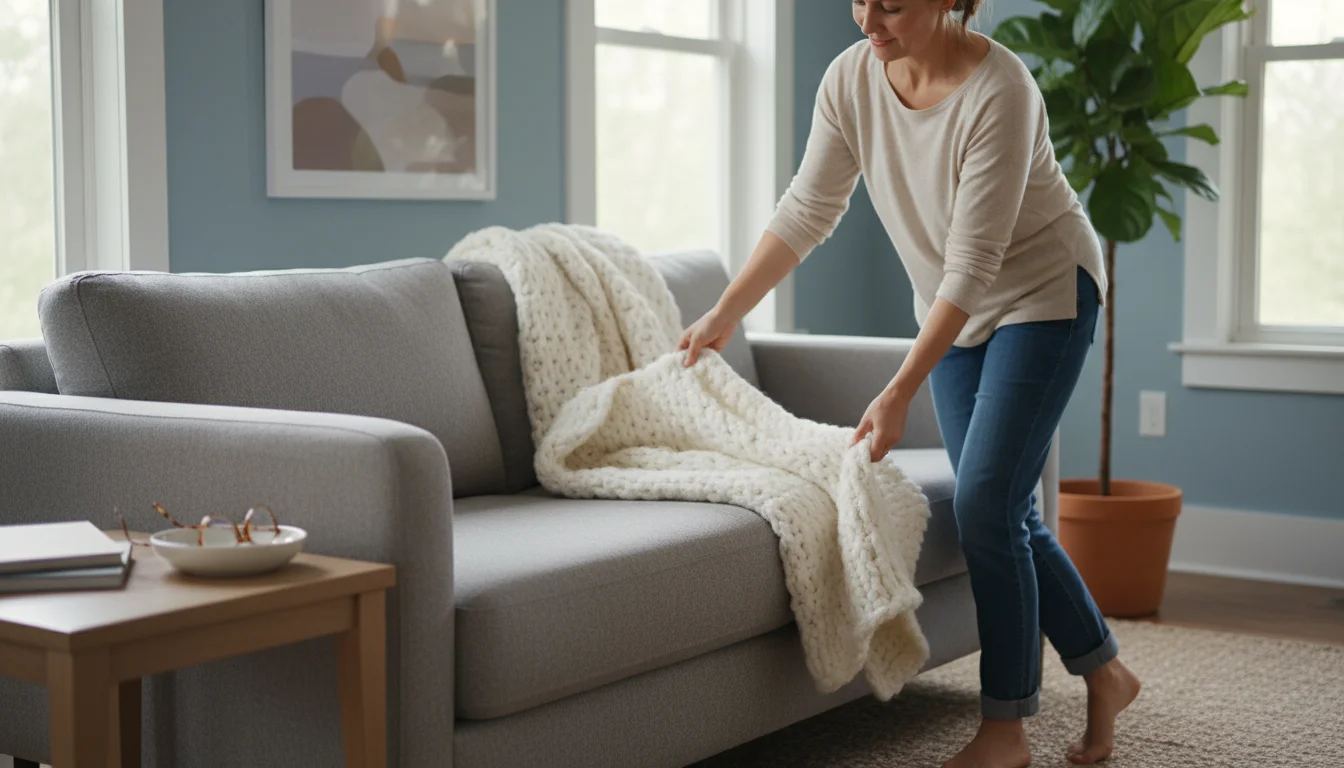
Maintaining Your Clutter-Free Home with One-Touch Habits
Implementing the One-Touch Rule effectively transforms your approach to home organization. Yet, consistent effort maintains the benefits. Think of maintenance not as a chore, but as an ongoing commitment to a peaceful living environment. These strategies help you integrate One-Touch into a lasting lifestyle of order.
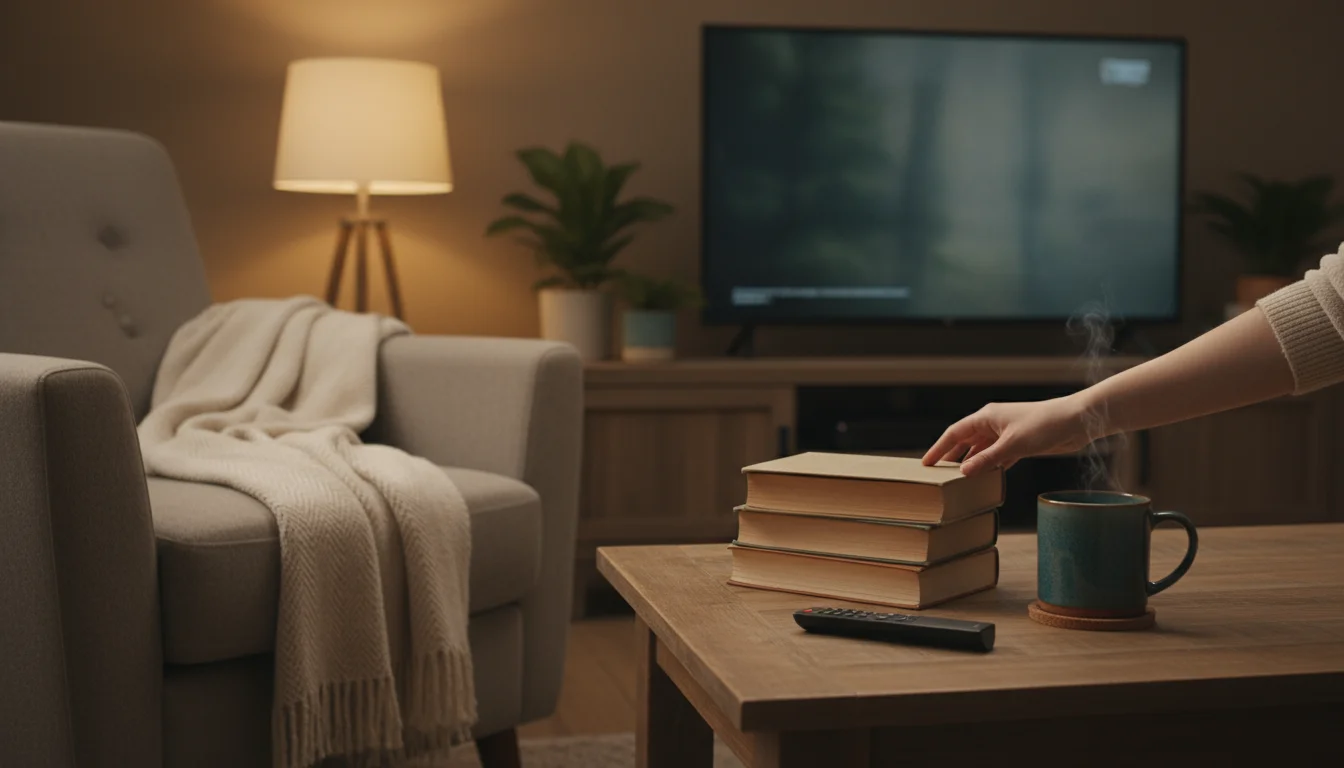
Establish Daily “Reset” Routines
Even with the One-Touch Rule, life happens. A few items might stray, or a busy day might prevent immediate action. Dedicate 5-10 minutes each evening to a “reset” routine. During this time, quickly scan your main living areas. Put away any lingering items using the One-Touch principle. This quick tidy-up prevents small messes from snowballing into larger problems, reinforcing your declutter habits.
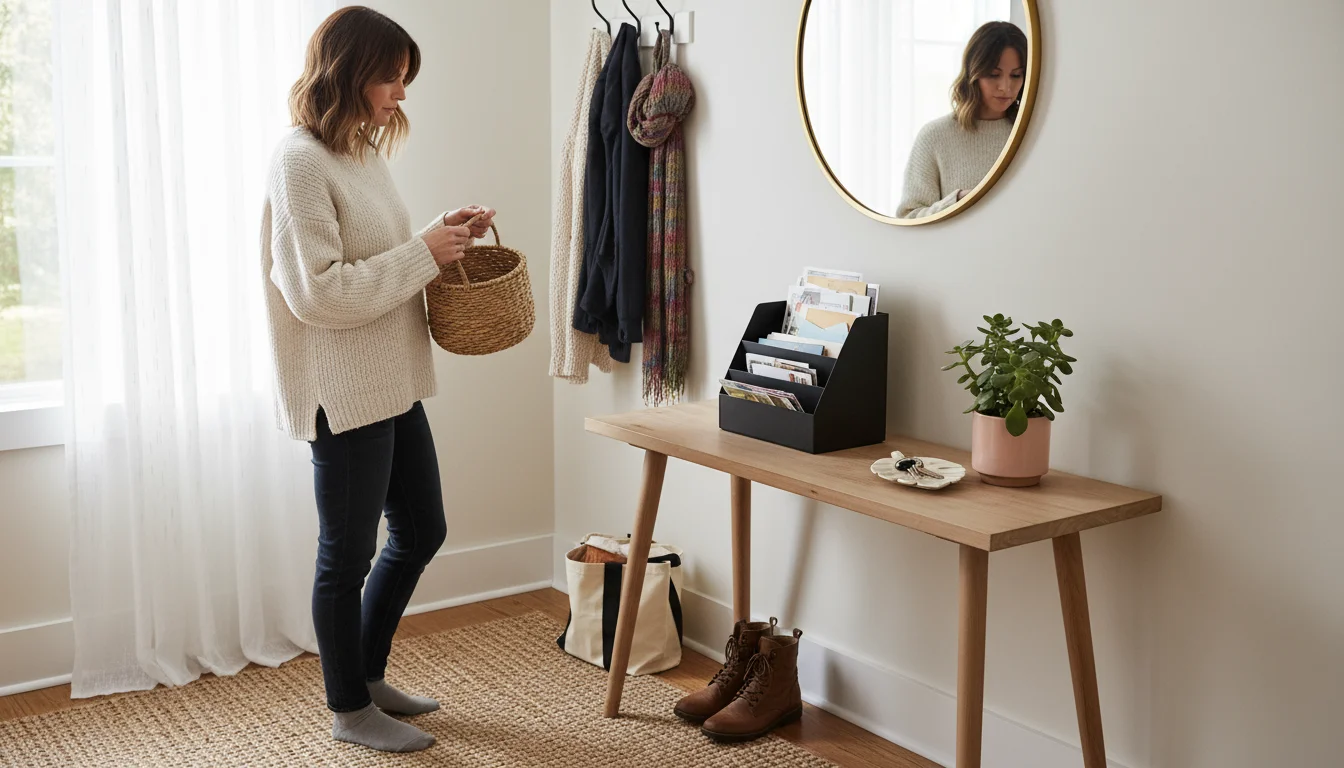
Regularly Review and Adjust Your Systems
Your home and needs evolve. What worked perfectly for organization six months ago might not be ideal today. As recommended by home organization experts, periodically review your systems. For example, if you find mail still piles up despite your entryway system, perhaps the recycling bin is too far, or you need a dedicated “action file.” Be honest about what is working and what is not, then make small adjustments. This continuous refinement keeps your One-Touch system efficient and relevant.
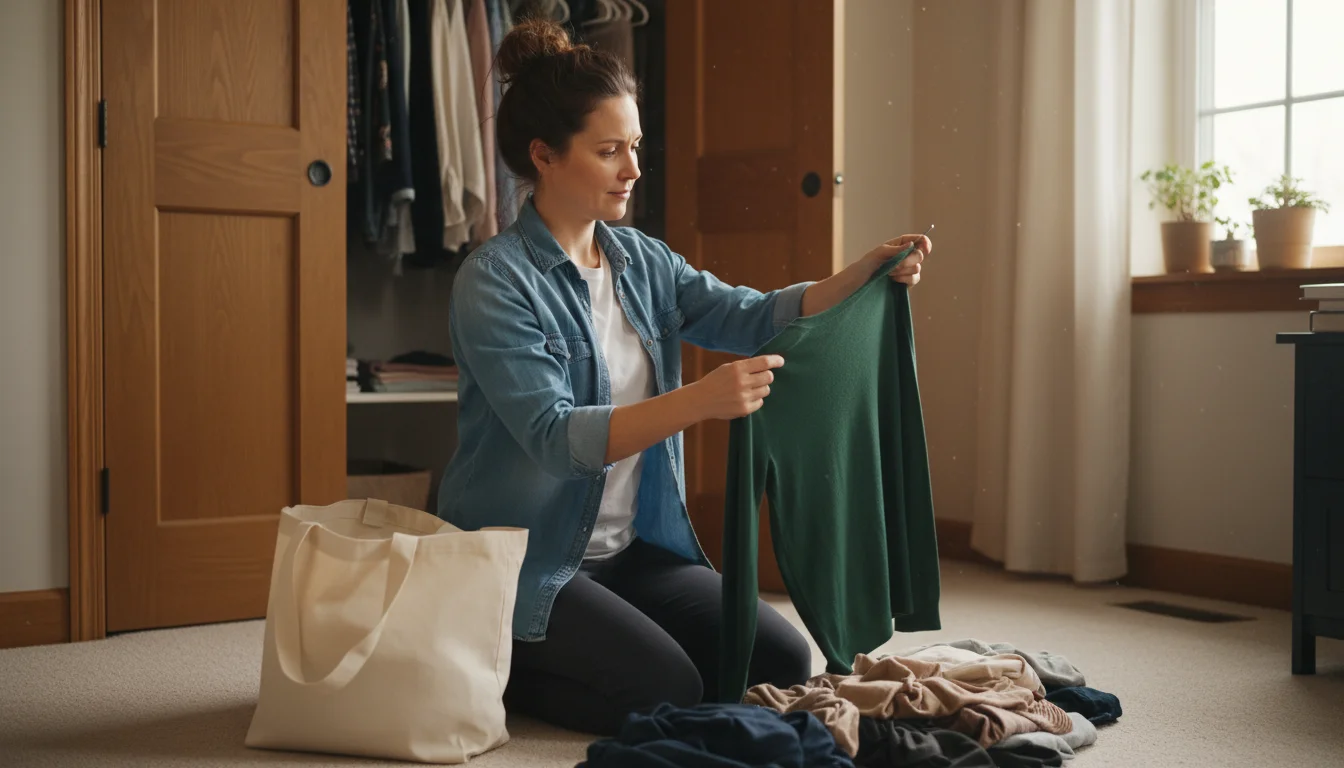
Declutter Seasonally
Despite your best efforts to prevent clutter, new items enter your home, and old items lose their usefulness. Schedule seasonal decluttering sessions, perhaps quarterly, to do a deeper dive. These sessions are perfect for evaluating clothes that no longer fit, toys that are no longer played with, or expired pantry items. This proactive approach ensures your “homes” remain appropriately sized for your belongings and prevents excess from accumulating. This supports overall home organization tips.

Be Mindful of New Purchases
The One-Touch Rule is about managing items once they are in your home. However, mindful purchasing complements this perfectly. Before bringing a new item into your home, ask yourself: “Do I have a designated home for this? Do I truly need it?” This simple mental check reduces the likelihood of buying something that will immediately become clutter. It is a powerful way to prevent clutter at its source.

Involve Everyone in the Household
For the One-Touch Rule to truly succeed, every member of your household must participate. Educate children and partners about the concept. Explain the benefits of a tidy home. Assign clear “homes” for everyone’s belongings and encourage them to use the One-Touch principle. Consistency from all occupants lightens the load and reinforces the desired habits, creating a shared responsibility for a well-maintained space.
By integrating these maintenance tips, you ensure the One-Touch Rule remains a powerful, sustainable tool for a consistently organized home. You move beyond temporary fixes to establish a lifestyle of effortless order and calm.

Budget-Friendly Solutions for One-Touch Organization
Implementing the One-Touch Rule does not require a large budget or expensive organizational products. Many effective solutions use items you already own or can acquire affordably. The emphasis remains on creating functional “homes” for your items, not on stylish containers.
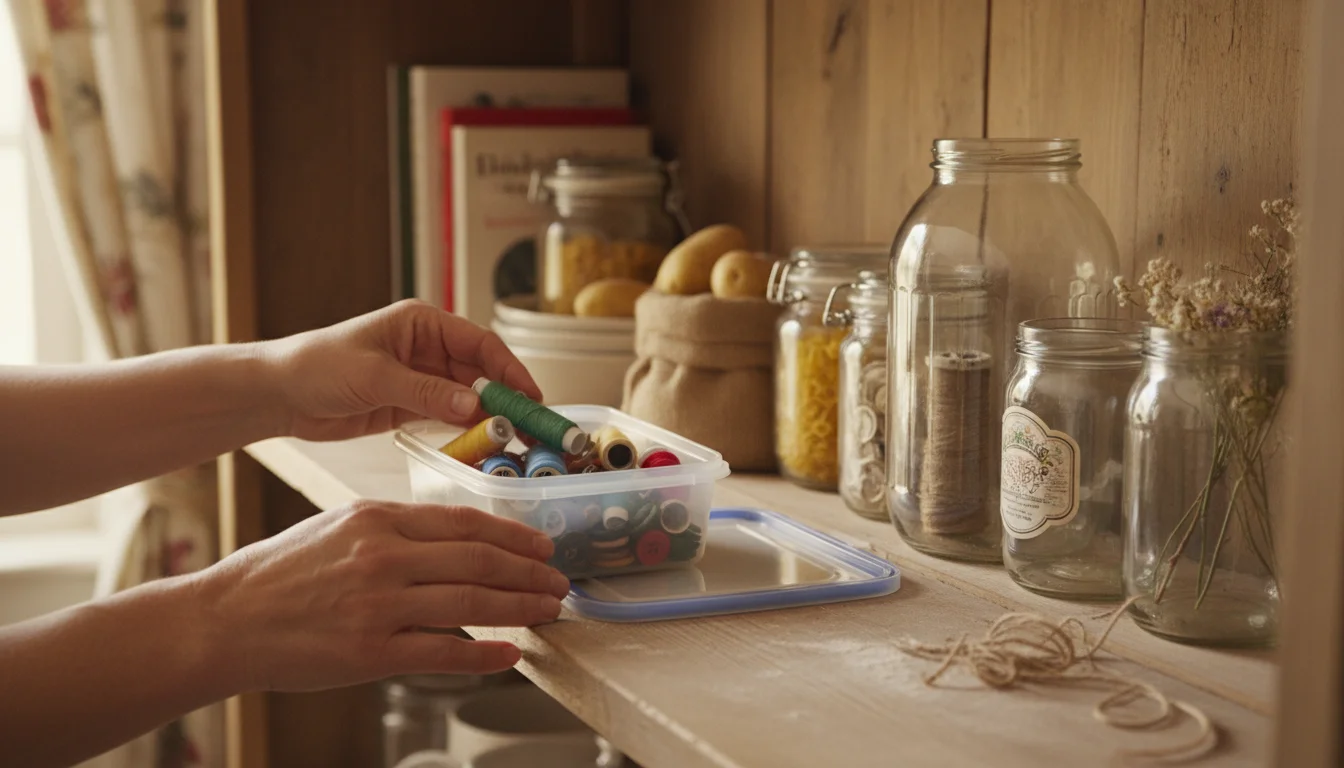
Repurpose What You Already Have
Look around your home with new eyes. Many everyday items make excellent, free organizers:
- Shoe Boxes: Cover them with decorative paper or fabric to create drawer dividers for socks, underwear, or office supplies. Use them to store small items on shelves.
- Plastic Containers: Leftover takeout containers or storage bins from food can organize craft supplies, small toys, or pantry items.
- Glass Jars: Cleaned jars from pickles, jams, or sauces are perfect for storing pens, art supplies, cotton balls, or dry pantry goods.
- Magazine Files: These are not just for magazines; use them to corral cutting boards, baking sheets, or even smaller purses in a pantry or cabinet.
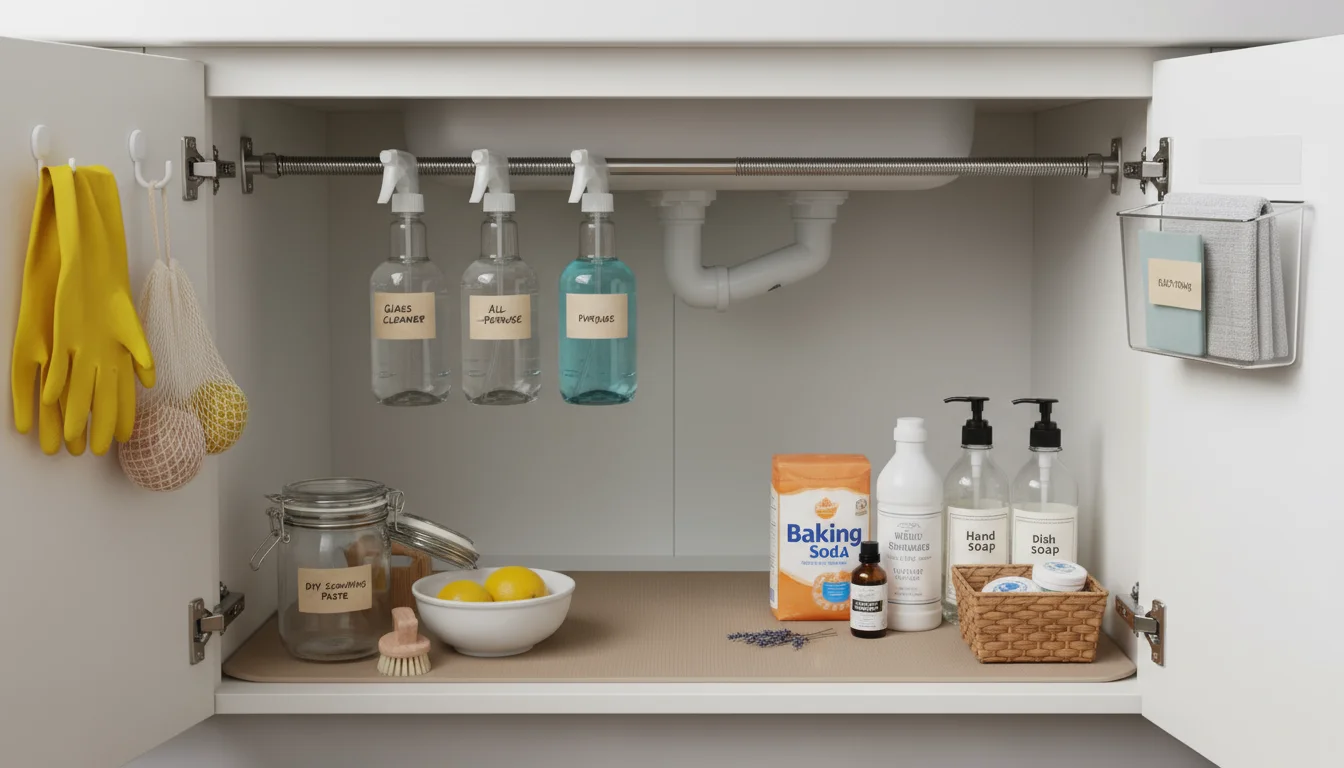
DIY Solutions with Inexpensive Materials
A trip to a dollar store or hardware store can provide budget-friendly materials for custom organization:
- Tension Rods: Use small tension rods inside cabinets to hang spray bottles or under sinks for cleaning supplies. Larger rods create additional hanging space in closets.
- Command Hooks: These versatile hooks organize keys, lightweight bags, kitchen utensils, or even jewelry on the back of cabinet doors or inside closets. They are removable and prevent wall damage.
- Pegboards: A simple pegboard from a hardware store, along with a few hooks and small bins, creates highly customizable storage for tools, craft supplies, or kitchen gadgets. Paint it to match your decor.
- Shelf Liners/Non-slip Mats: Prevent items from sliding around in drawers or cabinets, making it easier to maintain their “home.”

Smart Shopping for Essentials
When you do need to purchase organizing solutions, shop smart:
- Secondhand Stores: Thrift stores often carry baskets, bins, and small furniture pieces perfect for organization at a fraction of the cost.
- Discount Retailers: Stores like IKEA or The Container Store (online or during sales) offer cost-effective options for basic bins, drawer dividers, and shelving units. Look for their core functional pieces rather than specialty items.
- Multipurpose Items: Choose products that serve multiple functions. A storage ottoman provides seating and hides blankets, preventing them from becoming clutter.
- Start Small: You do not need to buy everything at once. Purchase organizational items as specific needs arise. Focus on one area, buy what is essential for that spot, and then move to the next. This prevents overspending on items you might not truly need.
Remember, the goal of the One-Touch Rule is to simplify your life and prevent clutter. Expensive systems are secondary to creating clear, functional homes for your items. By leveraging budget-friendly home organization tips, you can achieve a wonderfully organized space without breaking the bank.
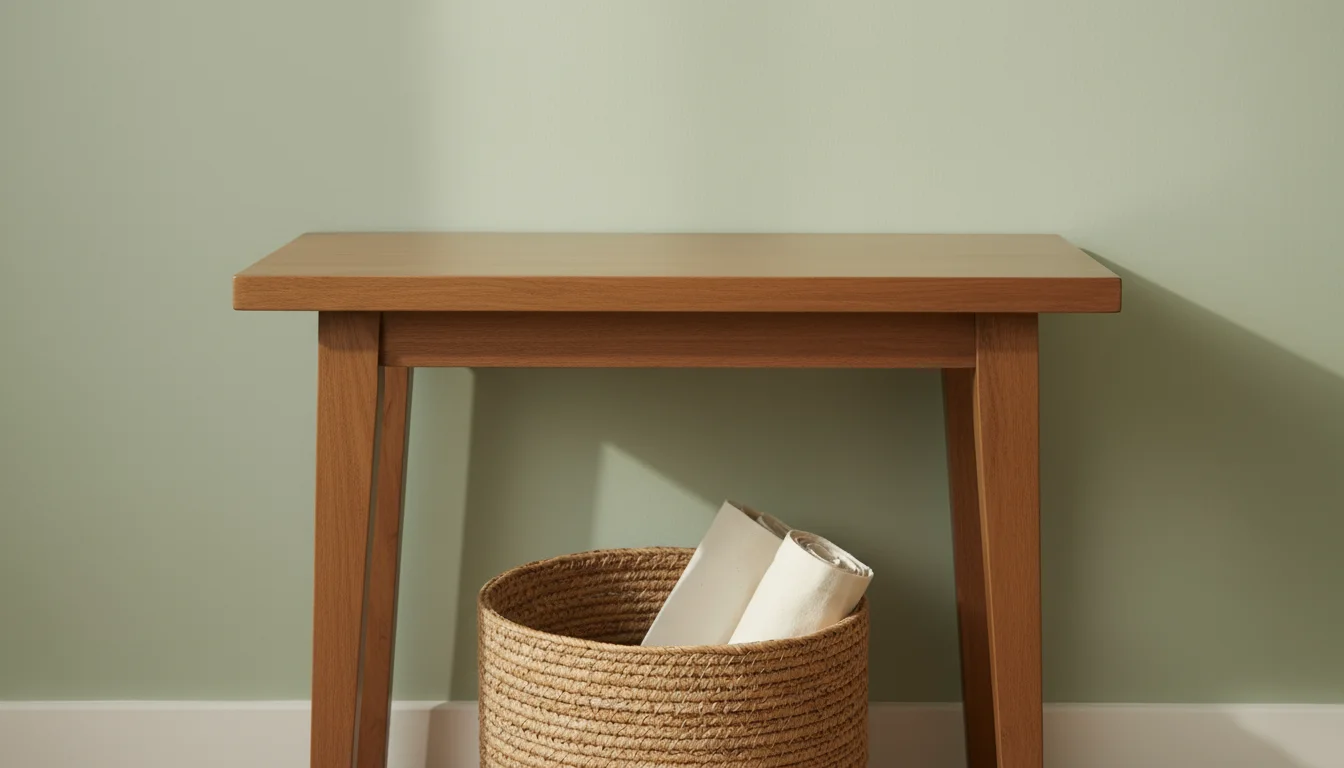
Frequently Asked Questions
Can I apply the One-Touch Rule if I live in a very small apartment?
Absolutely. The One-Touch Rule is especially beneficial for small spaces. When every square inch counts, allowing items to accumulate in “temporary” spots quickly makes a small area feel overwhelmed. By immediately putting things in their designated homes, you maximize your usable space and maintain order. Focus on vertical storage and multi-functional furniture to create those essential “homes” for your items.
What if I do not have a “home” for every item?
This is a common issue and a critical point to address before fully implementing the One-Touch Rule. If an item does not have a home, it becomes clutter by default. Your first step should be a decluttering session where you either assign a permanent, accessible home to every item you decide to keep or you remove the item from your home entirely (donate, discard, recycle). Once every item has a home, the One-Touch Rule becomes much easier to follow.
Does the One-Touch Rule apply to ongoing projects or items I am actively using?
Yes, but with a slight modification. For ongoing projects (e.g., a craft project, paperwork for taxes), assign a specific “active project zone” or container. When you finish for the day, put all project-related items into that container or designated zone. This still follows the One-Touch principle by putting them away in their temporary “home,” preventing them from spilling over into general living spaces. When the project finishes, you then One-Touch all items from the project zone to their permanent homes or discard them.
How do I get my family members to follow the One-Touch Rule?
Start by communicating the “why” behind the rule: less stress, more free time, a calmer home. Involve them in creating designated “homes” for their belongings. Make the systems easy to understand and access. For children, make it a game or tie it to their routine (e.g., “Once your coat is on the hook, you can play”). Lead by example. Consistency and positive reinforcement work better than nagging. You can also implement a family “reset” time each evening where everyone contributes to putting things back in their one-touch homes.
Is it okay to have an “inbox” or holding bin for things I need to process later?
Yes, a dedicated “inbox” for items requiring action (like mail to sort, papers to file, or small repairs) aligns with the One-Touch Rule, provided it is a single, clearly defined home for these temporary items. The key is to process this inbox regularly, preferably daily. Do not let it become a permanent stack. When you place an item into the inbox, you are still giving it a home with one touch. The next “touch” is when you process that inbox.
Applying the One-Touch Rule is one of the most effective home organization tips for preventing clutter and creating a calm, functional home. It requires initial effort in setting up systems and consistent practice, but the rewards are substantial. You reclaim your space, your time, and your peace of mind. By making immediate decisions and acting on them, you build powerful declutter habits that support a lifetime of organized, realistic living solutions.
For expert home organization guidance, visit
The Spruce — Home Organization and
Apartment Therapy.
Disclaimer: This article is for informational purposes only and is not a substitute for professional advice. Consult professional organizers or specialists for personalized recommendations.

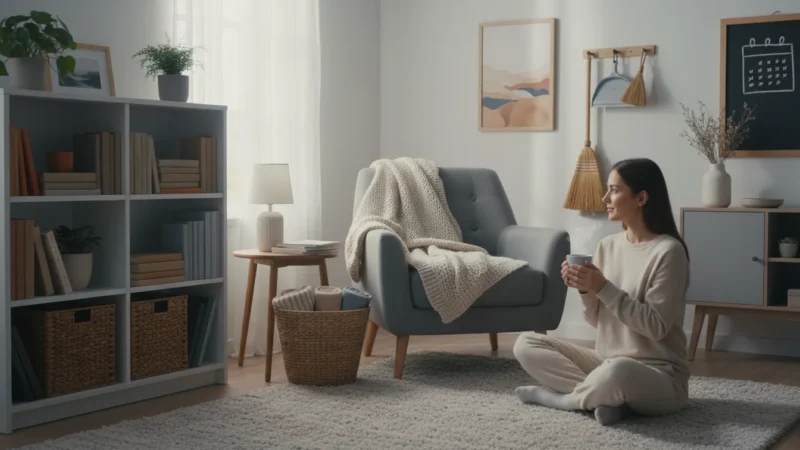


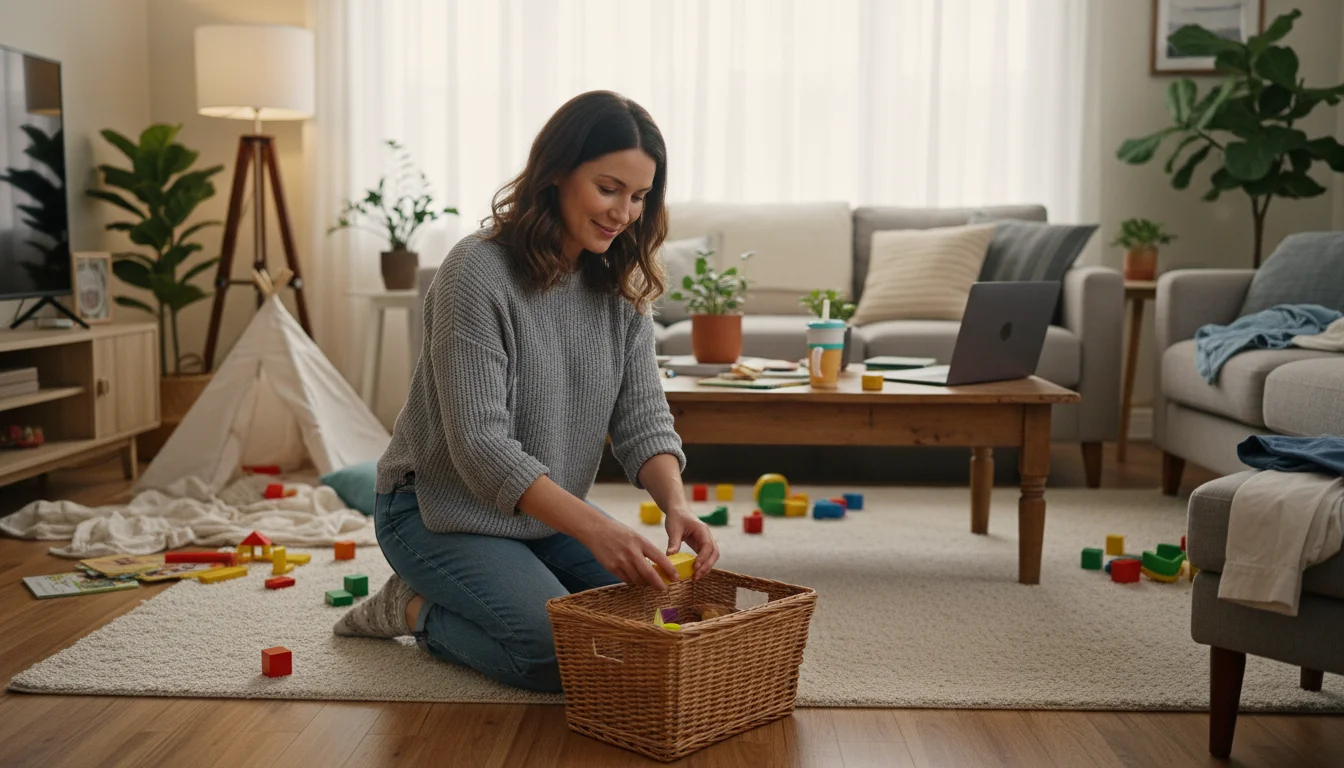
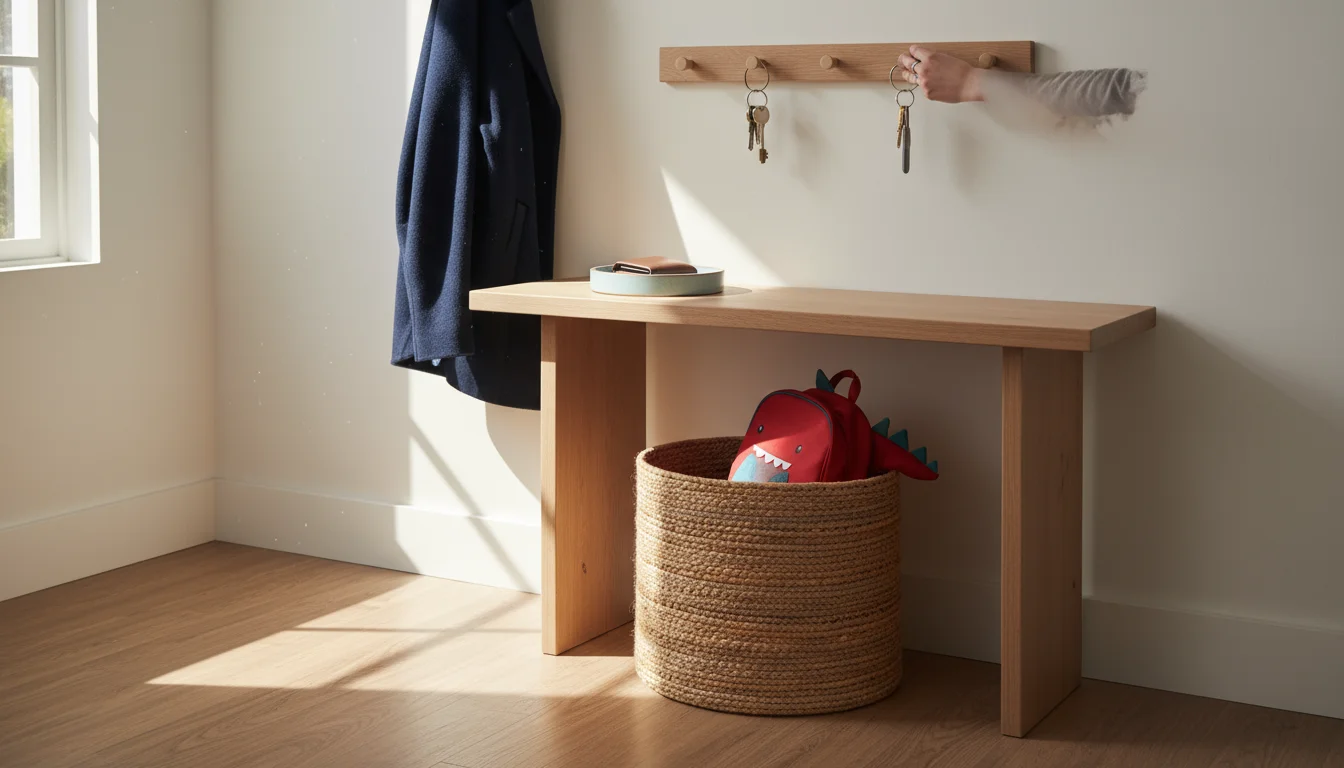

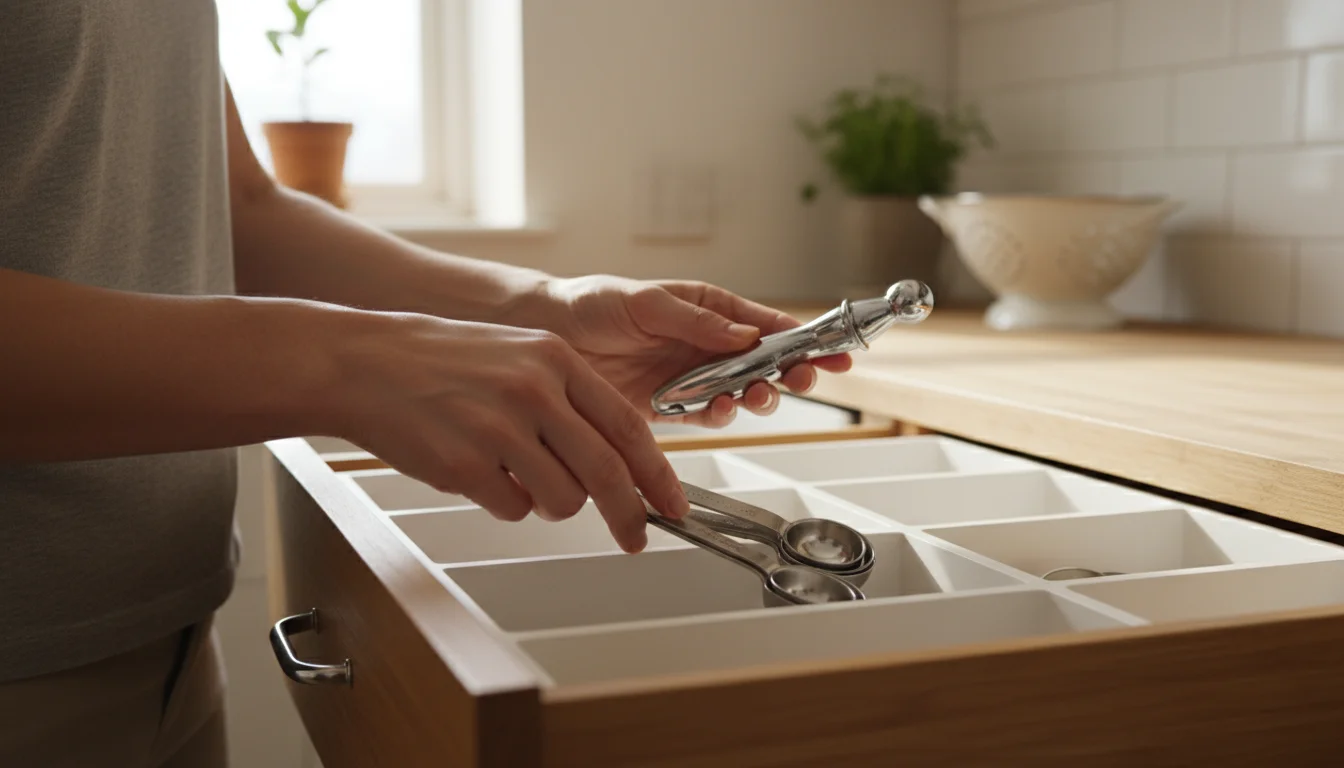
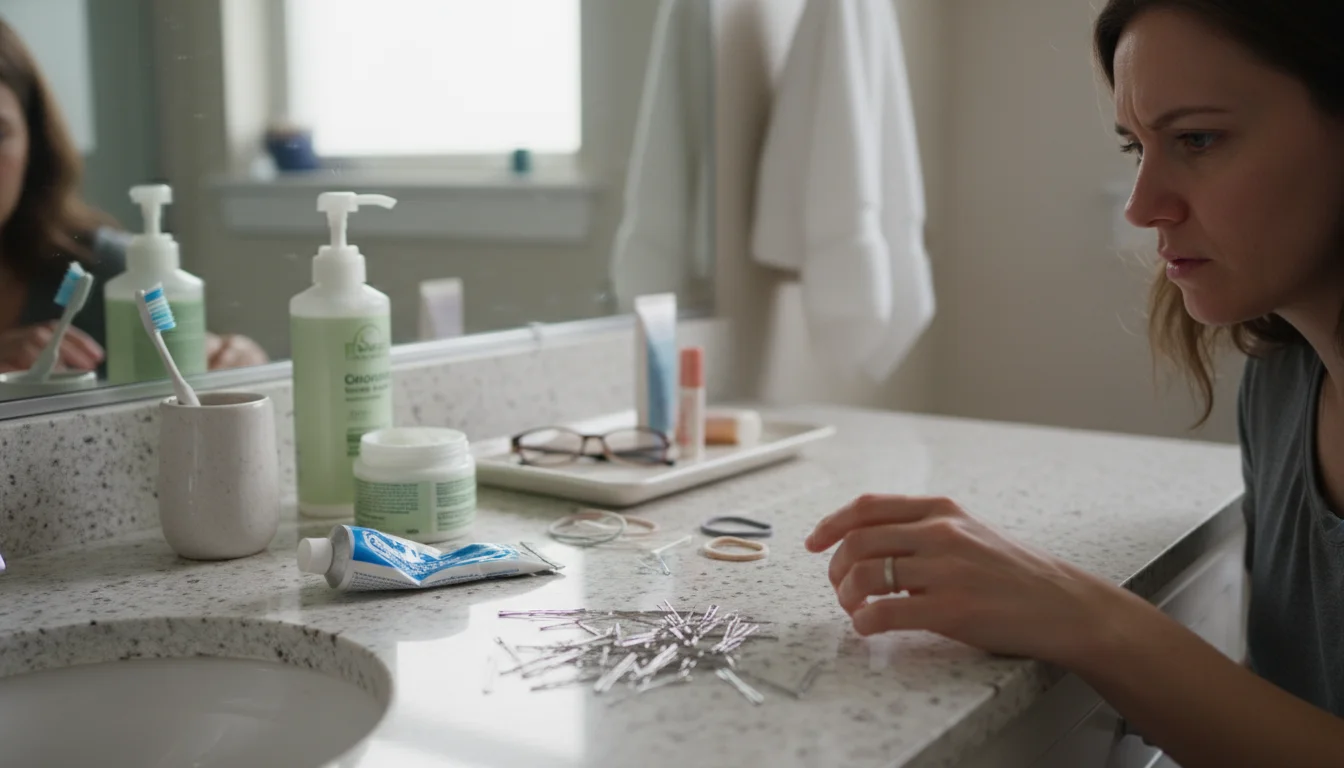
Leave a Reply